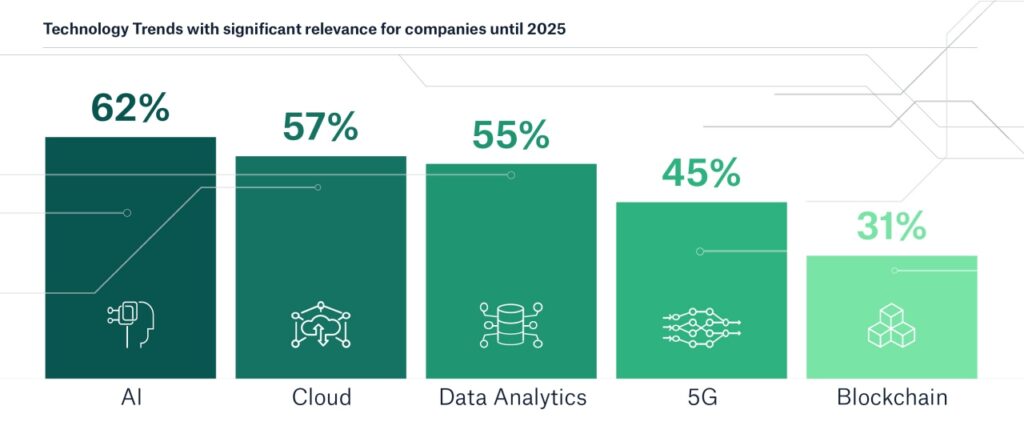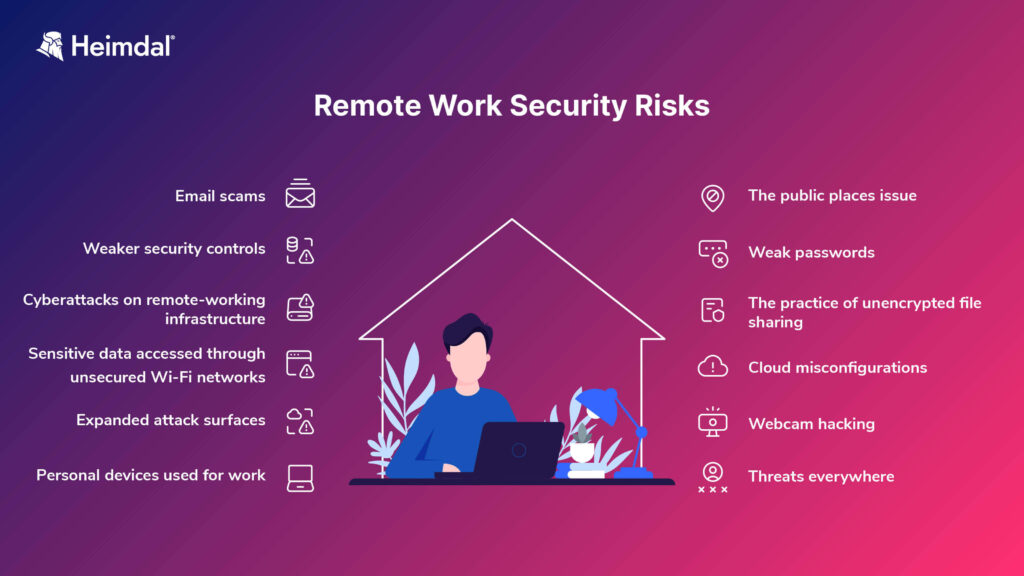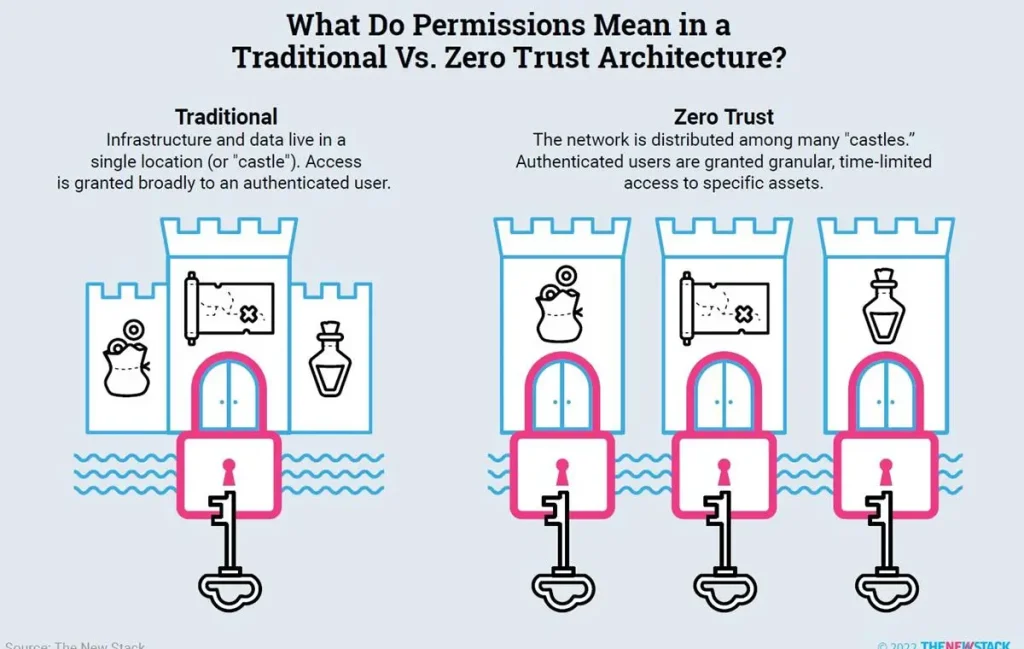Source: Munich RE Cyber Insurance Risks and Trends 2024
Increased Focus on the Benefits and Impacts of AI in Cybersecurity
In 2024, the forefront of cybersecurity is dominated by the transformative power of AI-driven solutions. With projections indicating that spending in this sector will exceed $61 billion by 2028 as per the Global X forecast, the adoption of AI promises proactive threat prevention, automated incident response, and unparalleled accuracy in identifying security breaches. Picture a digital fortress fortified by algorithms that not only react to threats but anticipate them, staying ahead of cybercriminals in real-time.
However, amidst the excitement, there’s a cautionary tale: cybercriminals are leveraging AI to automate their attacks, employing data-poisoning and model-stealing techniques to exploit vulnerabilities and evade detection. As we embrace these emerging cybersecurity trends, it’s paramount to balance innovation with vigilance, ensuring that the very technology meant to protect us doesn’t inadvertently empower those seeking to undermine our digital security.
Evolution of Phishing Attacks
Phishing attacks are becoming increasingly sophisticated and pervasive, with cybercriminals leveraging generative AI to craft hyper-realistic phishing lures, leading to a surge in successful attacks. According to a study done by egress, 94% of organisations were victims of phishing attacks, with 96% reporting a negative impact on their business. To exacerbate this further, the automation of these attacks through AI technology amplifies their scale and complexity, making them even more challenging to detect and combat.
But the threat doesn’t stop at deceptive emails. As mentioned, there’s a growing concern over the adoption of AI in cyberattacks targeting firmware and hardware, paving the way for more sophisticated and destructive breaches. Imagine AI-powered malware infiltrating the core of your systems, causing unprecedented damage. To counter these threats, organisations must prioritise employee awareness training and invest in advanced email security solutions.
Verizon reported that 82% of data breaches involved a human element in 2022, including phishing and the use of stolen credentials. By empowering employees with the knowledge to identify and report suspicious emails, and leveraging technologies like machine learning and behavioural analysis, organisations can mitigate the risks associated with evolving phishing threats.
Remote Working and Cybersecurity Implications
2024 unveils a host of emerging technological trends and challenges, notably propelled by the widespread integration of remote work since the COVID pandemic, with this trend appearing to accelerate still. As organisations adapt to this new operational paradigm, the imperative to fortify defences against a barrage of cyber threats looms large. With this surge in remote work, ensuring stringent data access control, fortified endpoint security, and encrypted communication channels is imperative.
To counter these escalating risks, organisations must adopt a multifaceted strategy to safeguard their remote work environments. The deployment of Virtual Private Networks (VPNs) establishes encrypted pathways for secure data transmission, shielding against potential breaches, while integrating robust multi-factor authentication (MFA) protocols adds an extra layer of defence, reducing the risk of unauthorised access.
Equally pivotal is the provision of comprehensive cybersecurity training for employees, empowering them with the skills to discern and mitigate potential threats at end-point level. These proactive measures can allow your business to confidently navigate the intricate web of cybersecurity challenges on the horizon.
Source: Heimdal | Most Common Remote Work Security Risks & Best Practices
Growing Importance of Internet of Things (IoT) Security
With the rampant proliferation of Internet of Things (IoT) devices, Forbes estimates suggest that the number of connected IoT devices will surpass 207 billion by the end of 2024 – this equates to over 25 devices per person across the planet, meaning that the stakes have never been higher for users like you and me.
Securing IoT networks requires a holistic approach that addresses vulnerabilities at every juncture. Implementing robust device authentication mechanisms ensures that only authorised users can access and control connected devices, mitigating the risk of unauthorised intrusion. The adoption of encryption protocols, such as Transport Layer Security (TLS) and Advanced Encryption Standard (AES), fortifies data transmission channels, safeguarding against interception and tampering.
Proactive and continuous monitoring for potential vulnerabilities is also paramount, with real-time threat detection enabling swift response and remediation. By embracing these strategies, businesses in the UK can navigate the complex landscape of emerging cyber threats in 2024 with confidence and resilience, safeguarding their IoT ecosystems against malicious exploitation.
Enhanced Focus on Mobile Security
From smartphones to tablets, mobile devices are not only our constant companions but also potential targets for cyber threats. MobileCorp have observed a stark increase of 350% in mobile cyberattacks in 2023, largely due to the ongoing workforce shift towards remote and hybrid working. The need to bolster our mobile defences has never been more urgent with camera spying, malware attacks and unsecured Wi-Fi risks making up just some of the methods criminals can exploit to get hold of not only your sensitive work data, bus also your highly personal information.
To tackle these emerging cyber threats head-on, proactive measures for mobile security are essential. Regular updates and reliable antivirus software serve as a crucial first line of defence against malware intrusions, while hardware protections are equally vital. Features like encrypted storage, fingerprint/face-scam authentication, and remote wipe capabilities add an extra layer of security against potential breaches. Once again, and arguably most important and accessible of all, is the education of users on safe browsing habits and the risks associated with connecting to unsecured Wi-Fi networks to actively safeguard their digital assets at home or on-the-go.
Zero Trust Security
Zero Trust Architecture, a pivotal cybersecurity trend for 2024, revolutionises traditional notions of network security by advocating for continuous verification and strict access controls across networks. This approach, characterised by the mantra ‘never trust, always verify,’ challenges the outdated castle-and-moat concept that once relied solely on perimeter defences. Adoption of this revised security model is said to expand dramatically between 2024 and 2032 in response to the growing concerns of data security and evolving cyber threat landscape.
Central to Zero Trust Architecture is the concept of continuous verification, wherein every user and device seeking network access undergoes rigorous scrutiny, regardless of their location or position within the network. This eliminates the inherent assumption of trust and necessitates robust authentication mechanisms such as multi-factor authentication (MFA) and biometric recognition across all users and devices.
Additionally, implementing micro-segmentation and enforcing least privilege access policies further enhances security by compartmentalising network resources and limiting user privileges to the essentials. This is something that we have fully adopted here at BCS, and continue to refine and develop our security measures to ensure that we maintain our security and compliance certifications.
Source: The New Stack | What’s The Latest Thinking About Security? Two Words: Zero Trust
Cybersecurity Insurance Becoming Mainstream
As businesses navigate the treacherous waters of the cyber threat landscape in 2024, one buoyant trend stands out: the rising adoption of cybersecurity insurance. With cyber threats evolving at an alarming pace, businesses in the UK are increasingly turning to insurance and certifications such as Cyber Essentials Plus as a crucial risk mitigation strategy. Munich RE discovered that the cyber insurance market reached $14 Billion in 2023, and estimate that this could more than double by 2027.
When it comes to selecting the right cybersecurity insurance policy, businesses must tread carefully to ensure comprehensive coverage and robust protection. First and foremost, evaluating the scope of coverage is paramount. Policies should encompass a wide array of cyber risks, including data breaches, ransomware attacks, and business interruption costs. Additionally, businesses should seek out insurers that provide robust incident response support, offering timely assistance in the event of a cyber crisis.
When it comes to securing your business, customisation is key; policies should be tailored to the unique needs and risk profiles of individual organisations, providing tailored solutions for maximum efficacy. There is also an accelerating trend of businesses requiring their customers to have the Cyber Essentials certification or similarly recognised levels of security verification before working with them or proceeding with existing contracts to ensure reliability in the future.
Summing Up
In 2024, the cybersecurity landscape witnesses a dynamic shift driven by several key trends. There’s a heightened emphasis on harnessing the benefits of AI to bolster cybersecurity defences, alongside an evolution in phishing attacks leveraging sophisticated techniques to attempt to dupe unaware users and employees into divulging sensitive and personal data.
The widespread adoption of remote working amplifies cybersecurity implications, necessitating robust measures to secure endpoints and communication channels without compromising efficiency on the frontier of modern working.
The growing importance of IoT security underscores the imperative for organisations to fortify their interconnected devices and proactively monitor their network access points to ensure employee safety and reliability.
Enhanced focus on mobile security reflects the escalating risks posed by mobile threats as more of our daily lives is embedded into our mobile phones.
The paradigm of Zero-Trust security is gaining momentum, advocating for continuous verification of user identities and device integrity to reduce internal threats and external unauthorised access into your infrastructure.
Additionally, cybersecurity insurance emerges as a mainstream risk mitigation strategy amidst escalating threats, cementing itself as a staple of any modern business relationship.
These trends underscore the evolving nature of cybersecurity, emphasizing the imperative for businesses to remain proactive in implementing the latest measures to safeguard digital assets and stay ahead of emerging threats.



